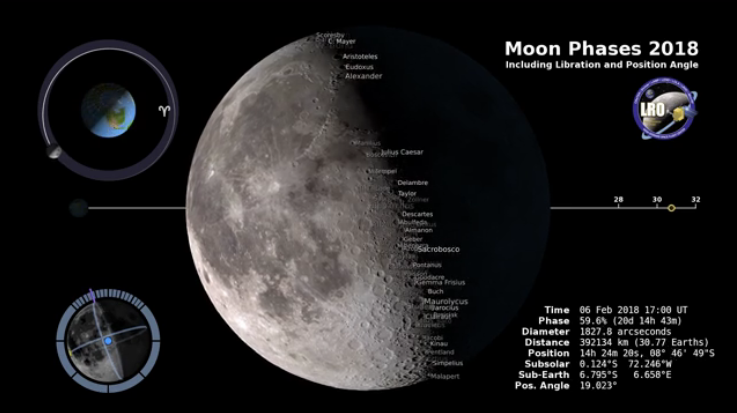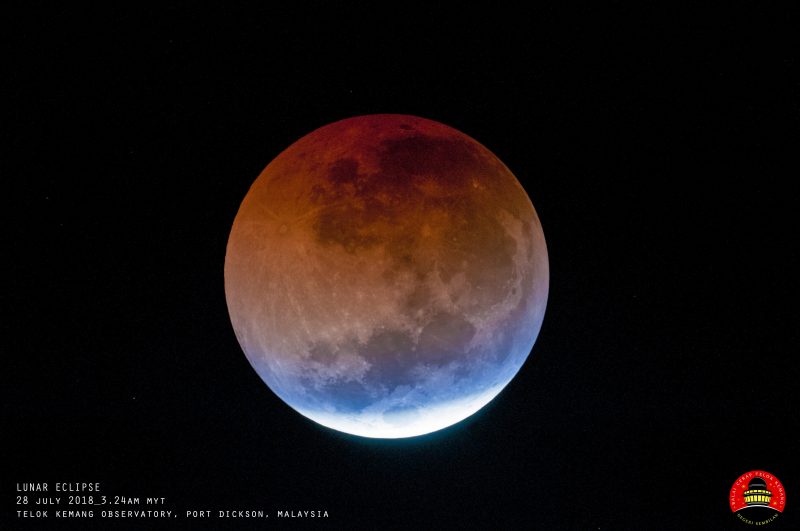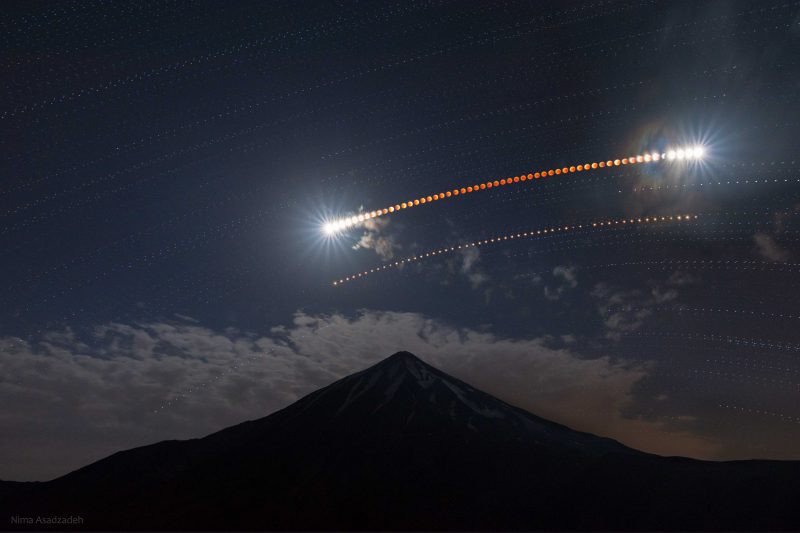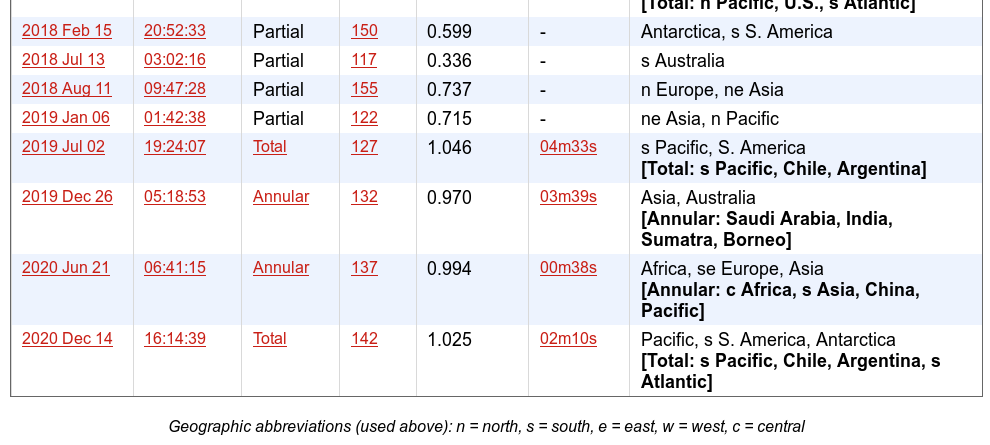 Copyright © Michael Richmond.
This work is licensed under a Creative Commons License.
Copyright © Michael Richmond.
This work is licensed under a Creative Commons License.
"Go through phases" -- what does that mean?
It means that the Moon's appearance changes from
night to night over the course of a moonth.
Just watch the movie below.
![]()

Image and animation provided by
NASA's Scientific Visualization Studio
Maybe you'd like a
larger version?
"Why does that happen?" you may ask. It's due to the motion of the Moon around the Earth, and the relative positions of the Earth, Moon, and Sun. Try playing around with the simulation below:
What's an eclipse? Well, there are two flavors of eclipses. In one -- the more well known and impressive -- the Moon passes in front of the Sun, blocking portions of its disk ...

Image courtesy of
Tomruen
and
Wikimedia
... or even the whole thing!

Image copyright
Bert Halstead
But there is a second variety, too, in which the Earth plays the role of the shadow-maker, blocking the light of the Sun from reaching the Moon. In a lunar eclipse, the Full Moon appears darker and redder than usual.

Image courtesy of
Nurul Fathin and EarthSky.org

Image courtesy of
Nima Asadzadeh and EarthSky.org
What causes eclipses? Well, either the Moon moving between Sun and Earth, or Earth moving between Sun and Moon. The real question might be --
Q: How long does it take the Moon to circle the Earth? Q: So how often should the Moon move between Sun and Earth? Q: So how often should people see solar eclipses?
Yes, it might seem reasonable to guess that there should be 12 or 13 solar eclipses each year ... but the actual number is (usually) only 2 or 3:

A portion of a table of solar eclipses
provided by Fred Espenak and NASA
Q: Why do we see only 2 or 3 eclipses each year, instead of 12 or 13?
The answer involves the nature of the Moon's orbit around the Earth, and the Earth's orbit around the Sun. Those two orbits do not lie in the same plane; in other words, the Moon's orbit is tilted relative to the Earth-Sun line. Play with the animations below to find out.

Movie of eclipse thanks to
NASA's Scientific Visualization Studio
Maybe you would prefer
a smaller version of the movie.
Some people ascribe the changing seasons to the non-quite-circular orbit of the Earth around the Sun. "Since the orbit is elliptical, there are times when the Earth is closer to the Sun," they reason, "and when the Earth is closer, we experience summer."
Q: Does the Earth's distance from the Sun change over the course
of a year?
Q: If so, when is the Earth closest to the Sun?
Yes, the Earth's orbit IS elliptical. The eccentricity of the orbit is pretty small, though: so small that the ratio of largest distance (aphelion) to smallest distance (perihelion) is only about 1.035; that's only about three percent. Using a bit of physics, the change in the intensity of sunlight due to this change in distance goes like the SQUARE of the ratio of distances, so about seven percent.
But if you actually measure the intensity of sunlight at noon in Rochester, NY, you'll find that the summer sun provides more then double -- or over one hundred percent more -- power than the winter sun.
So the idea that "distance from Sun causes seasons" just doesn't work. Oh, and there's also the fact that the Earth is closest to the Sun in January, when it is coldest here in Rochester.
Q: What DOES cause the large change in intensity of sunlight
in Rochester, NY?
 Copyright © Michael Richmond.
This work is licensed under a Creative Commons License.
Copyright © Michael Richmond.
This work is licensed under a Creative Commons License.